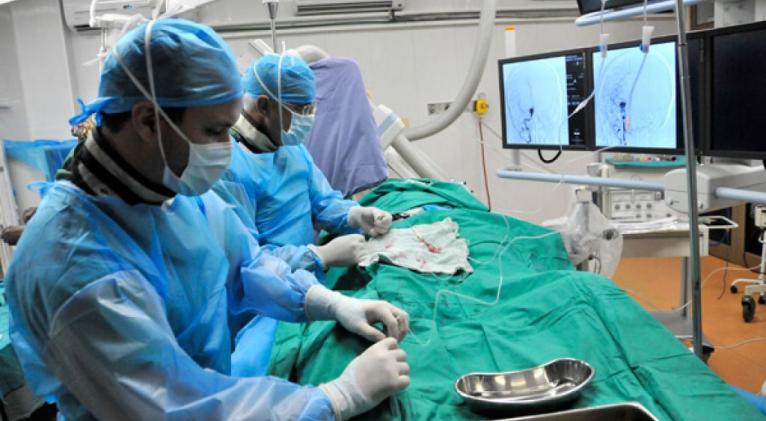Health Care, a Right in Revolutionary Cuba

After the triumph of the Cuban Revolution, there was a mass exodus of health professionals. History shows that 50 percent of 6,000 doctors left the country.
Amid that situation, the social transformation led by Fidel Castro in January 1959 placed free and universal access to health care without any kind of discrimination at the center of the process of changes, thus validating the humanistic essence of transformations.
From the Presidential Palace, on January 21, 1959, Fidel announced to the people and the world that the triumphant Revolution was 'an aspiration for social justice within the most complete freedom and the most absolute respect for human rights.'
In order consolidate access to health care as a fundamental human right, the professional training of doctors, nurses, pharmacists and assistants was promoted, as well as the creation of a National Health System.
The system took shape when physicians began rendering their services in the most remote places of the country, with the objective of providing primary health care and establishing the family doctor concept, which was adopted years later.
The process also changed the correlation of health forces in Cuba. Before, medical care (mainly private and expensive) was concentrated in urban areas, especially in the capital; then it expanded to the whole country.
The training of health professionals was accompanied by the creation of facilities for research in specialties such as cardiology, endocrinology, neurology, oncology and gastroenterology, among others.
Another concern was to expand the network of hospital services. According to official statistics, in 1959, there were only 94 hospitals and after the triumph of the Revolution, about 284 hospitals were built or modernized.
The changes improved health standards to the point that life expectancy increased from 55 years before 1958 to 78 years at present, for example.
In addition, the implementation of programs such as the Mother-Child Program turned Cuba into a leader and an example for other countries in the world. As a result, the infant mortality went down from 60 to less than 5 deaths per every 1,000 live births.
Studies to prevent and control diseases in the country were also part of the achievements by the national public health system.
Therefore, chronic non-transmissible, heart and cerebrovascular diseases, hypertension, accidents and malignant tumors were identified as the main causes of death.
The control of infectious diseases is a success thanks to the administration of vaccines, many of which are produced in Cuba and which allowed eradicating diseases like poliomyelitis, diphtheria, measles, tuberculosis and meningitis.
One of the outstanding programs focuses on the elderly and includes primary care, the support for the so-called senior citizen's clubs and other community initiatives.
International medical collaboration is another achievement by Cuban health system. Thousands of medical workers render their service in nearly 100 countries, where they have saved millions of lives.
Inscribed in the principles of South-South cooperation, Cuban medical assistance is present in most Latin American and Caribbean nations, as well as in underdeveloped regions of the world.
The high standards of medical coverage reported in Cuba are possible despite the significant damage caused by the economic, financial and commercial blockade imposed by the United States on the Caribbean island.
From April 1, 2016, to March 31, 2017, the blockade's economic damage to health care exceeded 87 million dollars, according to the resolution submitted by Cuba to the United Nations General Assembly on November 1.
The efforts by Cuban physicians to face these limitations have been essential to success in almost six decades of the Revolution.
* Journalist with the National News Desk at Prensa Latina













Add new comment